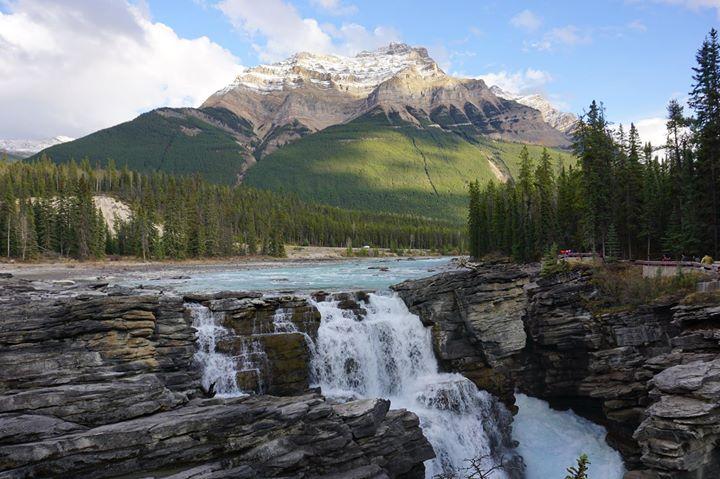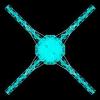-
Posts
1470 -
Joined
-
Last visited
-
Days Won
444
Reputation Activity
-
 UmarMakhzumi got a reaction from G_Farooq in Analysis and design of slab resting directly on masonry walls
UmarMakhzumi got a reaction from G_Farooq in Analysis and design of slab resting directly on masonry walls
W.Salaam,
There is a lot of recent posts on the forum about designing masonry in ETBAS/Safe. I would suggest you to search the forum to get the required answer. However, please note that we don't recommend using ETABS for Masonry design as it is a frame analysis software. You should either try locating a masonry design software or buy a masonry text book and follow the examples.
Regards,
-
 UmarMakhzumi got a reaction from Ayesha in Modeling of pile with soil behavior
UmarMakhzumi got a reaction from Ayesha in Modeling of pile with soil behavior
Vertical springs stiffness is obtained by dividing the load on pile by its deflection. Geotechnical provides recommendation on how to calculate pile deflection.
The above post by @ILYAS is about horizontal pile spring. The area is the side area (Pile dia * height b/w spring) not the cross-section area.
-
 UmarMakhzumi got a reaction from Ayesha in Reinforcement
UmarMakhzumi got a reaction from Ayesha in Reinforcement
W.salaam,
My suggestion would be that you still use the minimum specified yield strength of 460 MPa, as you are testing limited number of bars out of of thousands of bars that will be used for the structure. Also, it is good to keep some contingency as there are a lot of assumptions and limitations involved.
Thanks.
-
 UmarMakhzumi got a reaction from abbaskhan2294 in Back-span requirements for a cantilever beam supported on wall.
UmarMakhzumi got a reaction from abbaskhan2294 in Back-span requirements for a cantilever beam supported on wall.
Backspan is there as it needs to meet development requirement. That is the only purpose.
What Baz is referring to is the Stability Requirements at Cantilever root (see snapshot below for understanding). What that means is that your beam at location where it is supported on the wall should have lateral stability (either other beams coming from the side frame into your cantilever beam, or something stopping your cantilever beam from twisting). These requirements are well understood in steel design. I am attached a document that can provide you some insight from steel point of view. You can take that understanding related to stability and apply to concrete.
Thanks.
Cantilever Beams_Steel.pdf
-
 UmarMakhzumi got a reaction from Omer Ahmed in Structural Dynamics and Earthquake design lectures
UmarMakhzumi got a reaction from Omer Ahmed in Structural Dynamics and Earthquake design lectures
Clean website and useful information.
Thanks for sharing.
-
 UmarMakhzumi reacted to Omer Ahmed in Structural Dynamics and Earthquake design lectures
UmarMakhzumi reacted to Omer Ahmed in Structural Dynamics and Earthquake design lectures
Just found an amazing website with lectures on Structural Dynamics and Earthquake Engineering in Pakistan.
https://structurespro.info
-
 UmarMakhzumi got a reaction from EngrUzair in Is it in my head or is this forum too quite?
UmarMakhzumi got a reaction from EngrUzair in Is it in my head or is this forum too quite?
Part of the reason the forum went quiet as I found out recently was our Anti-Spam system. Almost all new users that registered on the website are now tagged for manual approval by Admins. Since that takes some time, therefore, the new users don’t get approved right away and by the time they get approved, the question for which they wanted to come to the forum is probably solved. We are looking into it. Apart from that, this forum focuses on a very small subset of Civil Engineering professionals - we also do admit that participation level is low as target audience is very limited and there are some challenges that we need to overcome.
Thanks.
-
 UmarMakhzumi got a reaction from Ayesha in ETABS 18.1 - Reverse local axes of shells
UmarMakhzumi got a reaction from Ayesha in ETABS 18.1 - Reverse local axes of shells
There is one tutorial on CSI Wiki for SAP2000. You can see if the same feature is in ETABS. I can't check as I don't have ETABS copy with me.
https://wiki.csiamerica.com/display/tutorials/Radial+point+load
Please download the attachment, report.pdf and read it.
Thanks.
-
 UmarMakhzumi reacted to WR1 in Joint reactions along local axes in ETABS
UmarMakhzumi reacted to WR1 in Joint reactions along local axes in ETABS
Solutions;
1. Why dont you import the cad drawing (as shown in image) into SAFE and draw footings with proper orientation?
2. Like you got reactions under so many combinations from ETABS for each column, in the same way, you could select all columns and export to EXCEL the local forces at and then filter for zero location and proceed with manual design.
3. Get global reactions (like you did already) but one group at a time. By one group i mean all the columns on one radial grid line. All columns on that grid will have same orientation and angle right. Export to EXCEL, transform forces in XY to that angle. New rotated forces will be;
Fx' = Fx Cos theta + Fy Sin theta
Fy' = -Fx Sin theta + Fy Cos theta
there you go, you now have the new rotated forces. Repeat it for each radial line and then design footings manually.
-
 UmarMakhzumi reacted to Badar (BAZ) in CRUSHING FORCE
UmarMakhzumi reacted to Badar (BAZ) in CRUSHING FORCE
I am not able to understand how can there be a demand of 1380kN axial force on this beam. Any way, you will design this member for combined axial+flexural actions, meaning it should be treated as column. Draw interaction diagram, and see if Pu, Mu falls within the envelope.
it depends on the demand-to capacity ratio.
-
 UmarMakhzumi reacted to Alinalysis in How to solve bending moment probelm ETABS
UmarMakhzumi reacted to Alinalysis in How to solve bending moment probelm ETABS
Thank you I asked my professor and I will consider the torsion as the program will calculate the required reinforcement
-
 UmarMakhzumi reacted to Badar (BAZ) in Spacing of Main Reinforcement in concrete column
UmarMakhzumi reacted to Badar (BAZ) in Spacing of Main Reinforcement in concrete column
If the structure is design as per IS code, you should follow the guidelines of the code, unless you can prove through a more rigorous analysis that the member will not achieve limit state intended by the code for prescribing this limitation on the spacing. I believe it is related to preventing the buckling of bar and to ensure the confinement of column core.
-
 UmarMakhzumi reacted to Engr Muhammad Imran in Stiffness modification
UmarMakhzumi reacted to Engr Muhammad Imran in Stiffness modification
Thank you so much Dear.
yes i mixed up because i am the beginner.
And i really appreciated your efforts and for spending valuable time with me.❤️
-
 UmarMakhzumi reacted to Badar (BAZ) in Stiffness modification
UmarMakhzumi reacted to Badar (BAZ) in Stiffness modification
You got them mixed up. They serve different purpose.
Stiffness modifier--------> effect of cracked properties at service/design loads
deflection amplification factor --------> kind of extrapolates elastic deformation to inelastic deformation for a structural system of known "R" value.
-
 UmarMakhzumi reacted to Badar (BAZ) in Back-span requirements for a cantilever beam supported on wall.
UmarMakhzumi reacted to Badar (BAZ) in Back-span requirements for a cantilever beam supported on wall.
There is no code requirement for it. You will need to make sure that enough length is available for the development of reinforcement at the critical x-section. Also insure the rotational stability keeping statics in mind, if it is critical.
-
 UmarMakhzumi got a reaction from Omer Ahmed in How to solve bending moment probelm ETABS
UmarMakhzumi got a reaction from Omer Ahmed in How to solve bending moment probelm ETABS
Please see the image below for hanger bars. I don't have ETABS. I do have SAP2000 so I can't check your file. Is your beam failing?
Thanks.
-
 UmarMakhzumi reacted to Badar (BAZ) in Are stiffness modifiers required only for analysis or for design as well?
UmarMakhzumi reacted to Badar (BAZ) in Are stiffness modifiers required only for analysis or for design as well?
You can design your members for the forces that you got by assigning the code prescribed stiffness modifiers. It wouldn't be an unreasonable approach since members will experience cracks at the ultimate limit state. But if you decide to tread an conservative approach, and design your beams based on gross cross-section, and columns based on cracked properties, it is still reasonable. But, the later approach will require you to run two more models. one more beams and the other for columns. And if you have shear walls, then you might need another model.
-
 UmarMakhzumi reacted to Muhammad Hashmi in Piled raft
UmarMakhzumi reacted to Muhammad Hashmi in Piled raft
Hi Umer,
Thank you Ya its answered
Just need to know now about point 2
"Any code that recommends the safe boring distance between piles"
-
 UmarMakhzumi reacted to Ayesha in Dual System Check in ETABS
UmarMakhzumi reacted to Ayesha in Dual System Check in ETABS
Calculate your base shear.. delete everything from the model except for shear wall and apply the seismic load manually on the wall. That is one way to do it.
-
 UmarMakhzumi reacted to Ayesha in Checking Bending Moment and Shear Forces using ETABS
UmarMakhzumi reacted to Ayesha in Checking Bending Moment and Shear Forces using ETABS
Normally, we run all load combinations and then in result summary see which load combo is governing and check that one.
-
 UmarMakhzumi got a reaction from Omer Ahmed in Torsion: Reinforced Concrete Members
UmarMakhzumi got a reaction from Omer Ahmed in Torsion: Reinforced Concrete Members
*SEFP Consistent Design*
*Torsion: Reinforced Concrete Members *
*Doc No: 10-00-CD-0001*
*Date: May 24, 2013*
Torsional forces, generally speaking, occur in combination with flexural and transverse shear forces. From a design perspective, we need to understand difference between two torsion types:
Compatibility Torsion Equilibrium Torsion Compatibility Torsion
Compatibility Torsion is when a member twists to maintain deformation compatibility; its induced in structural members by rotations (twists) applied at one or more points along the length of member. The twisting moments induced are directly dependent on the torsional stiffness of the member. These moments are generally statically indeterminate and their analysis necessarily involves (rotational) compatibility conditions(click on the image to enlarge).
For the floor beam system shown above, the flexure of the secondary beam BD results in a rotation ǾB at the end B. As the primary (spandrel) beam ABC is monolithically connected with the secondary beam BD at the joint B, deformation compatibility at B implies an angle of twist, equal to ǾB at spandrel beam ABC, and a bending moment will develop at the end B of beam BD. The bending moment will be equal to, and will act in a direction opposite to the twisting moment, in order to satisfy static equilibrium. The magnitude of ǾB and the twisting/ bending moment at B depends on the torsional stiffness of the beam ABC and the flexural stiffness of beam BD.
Now here is the fun part, the torsional stiffness of a reinforced concrete member is significantly reduced by torsional cracking. So, if you don’t design your spandrels for compatibility torsion, they will crack, increasing ǾB and reducing the induced twisting moment. To paint the same picture while using ETABS, set your torsional stiffness of the main beam to zero. This will also increase the amount of flexural reinforcement in your secondary beams.
Moreover, considering design practice in Pakistan (since we never design beams without shear reinforcement), compatibility torsion can be ignored for regular structures, as minimum shear reinforcement in most cases would stand up to cracking torque. From ACI 318 commentary R11.6.1,
Do note that there are some situations (such as circular beams supported on multiple columns) where both equilibrium torsion and compatibility torsion coexist. Also, eccentrically loaded beams, member curved in plan, and member of space frames will be subjected to torsion. See the attached “Timesaving-TorsionDesign-IA.pdf” as a go-by. Timesaving-TorsionDesign-IA.pdf
Equilibrium Torsion
In simplest words, Torsion is a limit state in this condition; a structure is subjected to equilibrium torsion when it can maintain equilibrium only by resisting the torsion. In such a case, torsional moment cannot be reduced by redistribution of internal forces since the torsional moment is required for the structure to be in equilibrium. From ACI- 318 (click on the image to enlarge).
Moreover, see the structures below that defy gravity when subjected to different kind of loads by standing up to equilibrium torsion.
Overall Building Torsion
For overall building torsion, the torsional effects can be minimized by reducing the distance between the center of mass and center of rigidity. Center of Mass is the point where the mass of an entire story is assumed to be concentrated. The center of mass is crucial as the location of seismic force at a particular level depends upon it. The distance between the Center of Mass and the Center of Rigidity should be minimized, but may not be possible due to building geometry. Invariably, effects of torsion are present in at all buildings although analysis may show that in some buildings torsional effects are negligible.
-
 UmarMakhzumi reacted to Ayesha in Auto-Generated Load Combinations ETBAS & Building Codes for Pakistan
UmarMakhzumi reacted to Ayesha in Auto-Generated Load Combinations ETBAS & Building Codes for Pakistan
You should use IBC with ACI as UBC is not compatible. If you still want to use UBC, this is grey area and engineering judgement should be used. Discuss with the people in your office and pick something conservative.
There are two approaches. Either you design based on Envelope (Consider the max of all forces, Fx, Fy, Fz, Mx, My, Mz) and design for that. Or you can each load combination one by one. You can develop an excel macro to do that.
-
 UmarMakhzumi reacted to Bahram Kiani in Beam torsion in ETABS
UmarMakhzumi reacted to Bahram Kiani in Beam torsion in ETABS
Common practice we follow in Pakistan for this problem is to reduce the torsion modifier to 0.01.
Detailed discussion on this topic :
-
 UmarMakhzumi got a reaction from Omer Ahmed in Minimum Reinfocement Criteria For Crack Control
UmarMakhzumi got a reaction from Omer Ahmed in Minimum Reinfocement Criteria For Crack Control
So looks like today, I came across the same problem that is being discussed here. I had to provide a design criteria for a buried concrete pit. I will summarize my findings below for the benefit of everyone. This applies to structural members that are subjected to environmental exposure conditions or that are required to be liquid tight.
1) The first step is to calculate flexural demand in the walls of concrete pit/ water tank based on all possible conditions. For the case of buried concrete pit, it included, empty condition (no fluid in the pit) , operating condition (full of liquid), test condition (no backfill around the pit and it is full of liquid) etc. Buoyancy checks should also be performed.
2) Compare required flexural reinforcement against minimum reinforcement ratio = 0.006 per ACI 350, Table 7.12.2.1 & ACI 224 , Section 3.5 and provide whichever is the maximum. The ratios provided are basically temperature and shrinkage reinforcement ratios based on gross section so provide half of the reinforcement at each face.
3) Satisfy maximum crack width of water-retaining structure = 0.10 mm, ACI 224R-01 Table 4.1 based on the reinforcement already provided. If the reinforcement is inadequate, increase the reinforcement till this requirement is met. To meet this requirement, smaller bars should be used with close spacing.
Now a few comments on the the excellent discussion above.
@Khawaja Talha post above is applicable for all normal cases where there is a restraint to shrinkage and temperature movements only. If you have a condition like that, you need to provide 0.45% reinforcement ratio in your slabs. Example of a situation where this would be applicable will be a structure where movement or expansion joints haven't been provided at industry standard spacing. But if you want to meet liquid tight start with 0.6% as a minimum and work your way as suggested above.
Other posts above explain the same things in a slightly different manner but all good.
Thank you
-
 UmarMakhzumi got a reaction from Omer Ahmed in Construction Of Special Moment Resisting Frame
UmarMakhzumi got a reaction from Omer Ahmed in Construction Of Special Moment Resisting Frame
Its more than that. You have to see what seismic zone your building lies and have to select the appropriate level of ductility and over-strength. I would recommend skimming through ACI Chapter 21. I have also attached some documents pertinent to the discussion that will help you develop a better understanding of aforesaid. Go through read them and if you have any question post in the forums
Goodluck!
How do Beam-Column Joints in RC Buildings Resist Earthquakes.pdf
How do Columns in RC Buildings Resist Earthquakes.pdf
How to make building ductile for Good Seismic Performace.pdf
How do Earthquake Affect Reinforced Concrete Buildings.pdf
What is seismic design philosophy of Buildings.pdf





